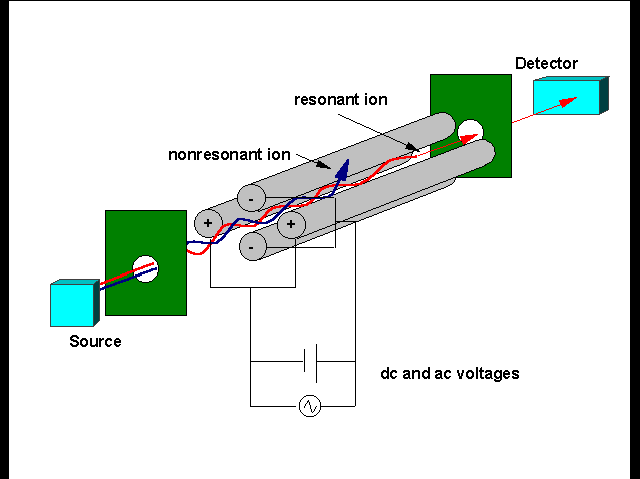
| CHP Home | GenChem Analytical Instrumentation Index |
|---|
A quadrupole mass filter consists of four parallel metal rods arranged as in the figure below. Two opposite rods have an applied potential of (U+Vcos(wt)) and the other two rods have a potential of -(U+Vcos(wt)), where U is a dc voltage and Vcos(wt) is an ac voltage. The applied voltages affect the trajectory of ions traveling down the flight path centered between the four rods. For given dc and ac voltages, only ions of a certain mass-to-charge ratio pass through the quadrupole filter and all other ions are thrown out of their original path. A mass spectrum is obtained by monitoring the ions passing through the quadrupole filter as the voltages on the rods are varied. There are two methods: varying w and holding U and V constant, or varying U and V (U/V) fixed for a constant w.
Schematic of a quadrupole filter
Quadrupole mass spectrometers consist of an ion source, ion optics to accelerate and focus the ions through an aperture into the quadrupole filter, the quadrupole filter itself with control voltage supplies, an exit aperture, an ion detector, detection electronics, and a high-vacuum system.
| Top of Page |